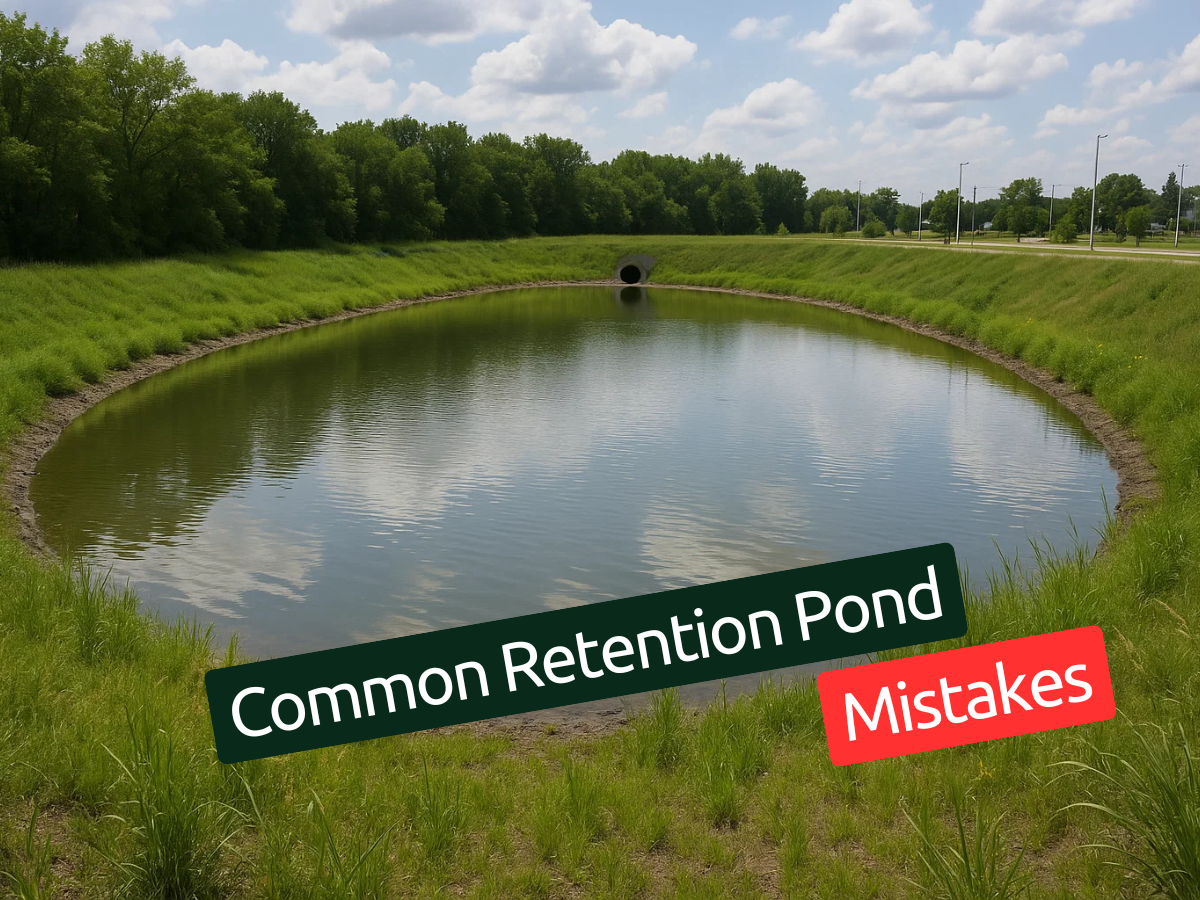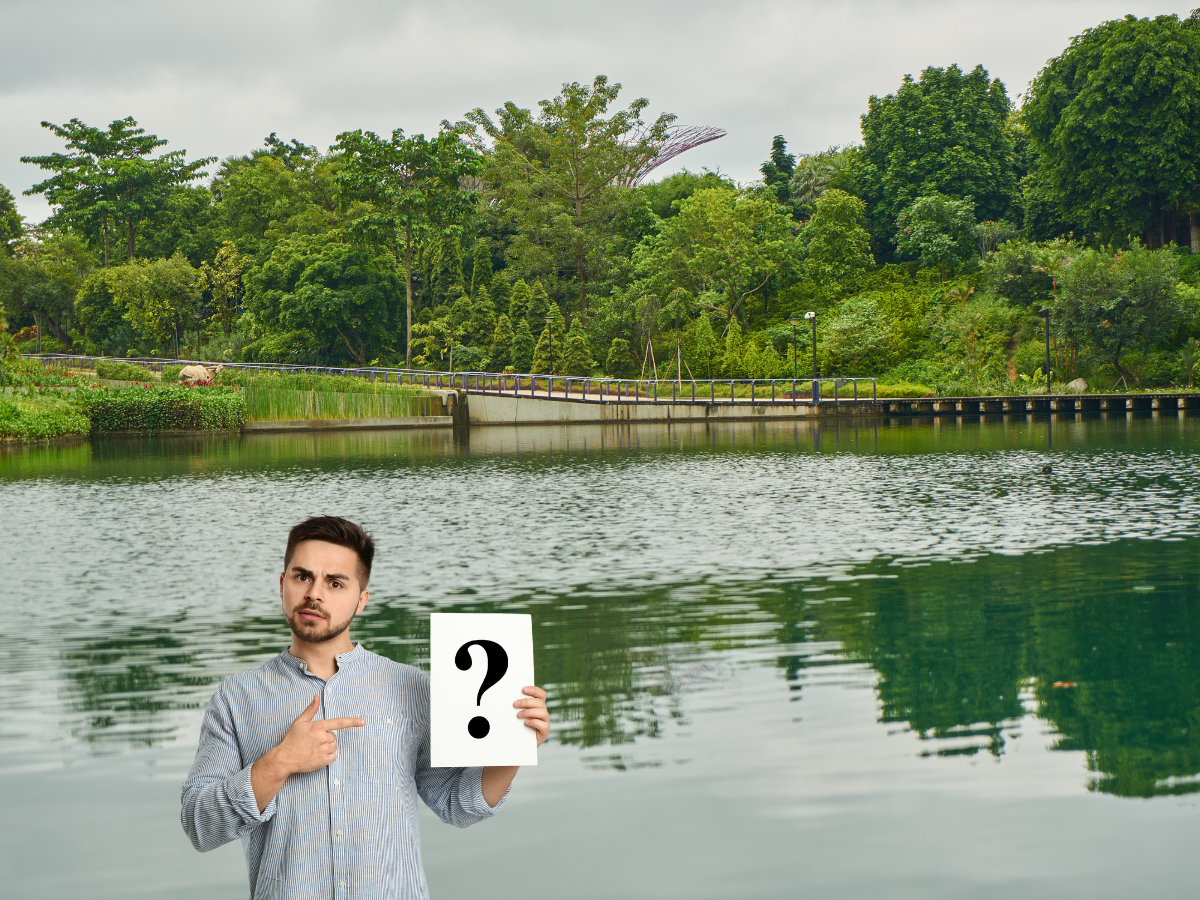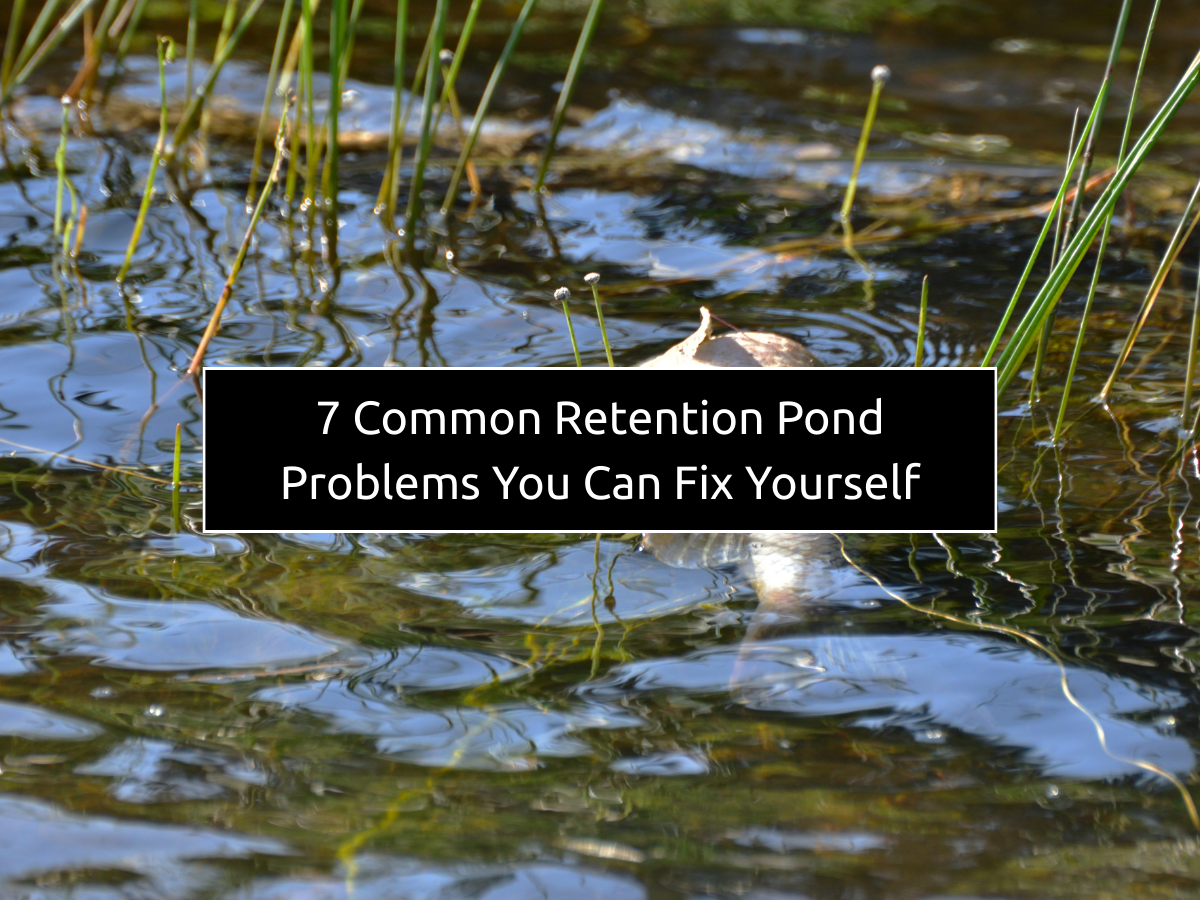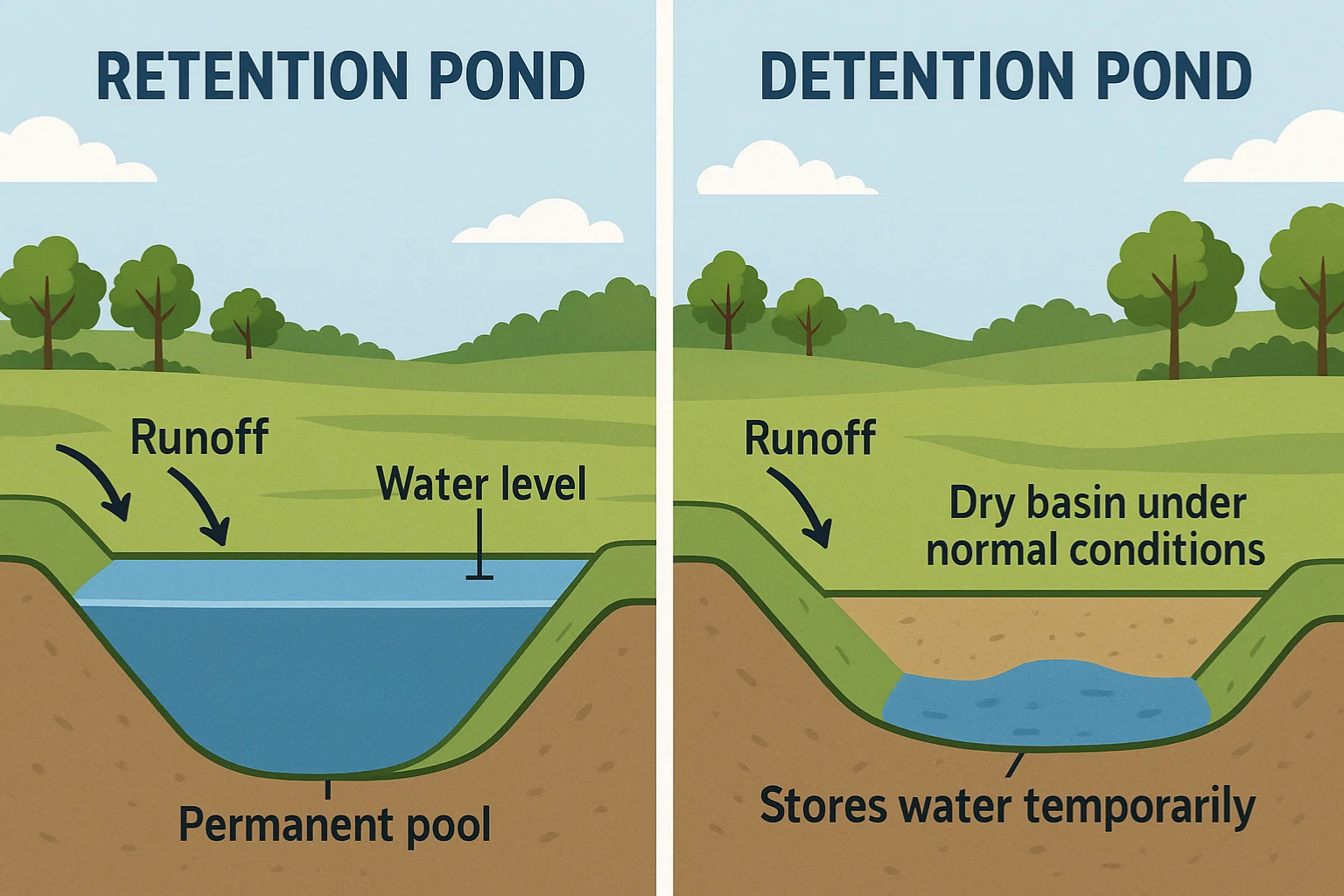
If you have a retention pond on your property, it’s not just for looks. It plays a key role in managing stormwater, reducing floods, and keeping local water clean.
But if it’s not maintained the right way, you could end up with:
Clogged pipes
Algae overgrowth
Mosquito problems
Even fines from the city
Let’s break down the most common retention pond maintenance mistakes and how you can avoid them—step by step.
What is a Retention Pond, and Why Does It Need Maintenance?
A retention pond (also called a stormwater pond) is a man-made basin that holds water permanently. It helps control how rainwater flows off roads, roofs, and parking lots.
In Madison, GA, rain and snowmelt can create a lot of runoff. A well-maintained retention pond:
Slows down water
Removes dirt and pollution
Stops flooding in nearby areas
But this system only works if the pond is clean and properly working. If it’s ignored, problems build up fast.
1. Not Checking the Pond Regularly
Problem:
Many people forget to inspect their pond. Over time, trash, weeds, or sediment pile up.
Why it matters:
Blocked inlets and outlets can cause standing water, overflows, or damage to nearby property.
How to avoid this mistake:
Inspect your pond twice a year — once in spring and once in fall
After heavy storms, walk around and check for debris
Look for signs of erosion, pipe damage, or water not draining
Tip: Create a simple log to track inspections and what you see each time.
2. Letting Plants and Weeds Grow Wild
Problem:
Overgrown plants may seem harmless, but they often block pipes and attract pests.
Why it matters:
Thick growth can hide erosion, damage, or buildup—and becomes harder to manage over time.
What to do instead:
Cut tall grass and weeds around the pond edge
Keep a buffer strip of native plants (about 10–15 feet wide)
Remove invasive plants like reed canary grass or cattails before they take over
Note: Native plants help filter runoff and prevent soil from washing away.
3. Ignoring Sediment Build-Up
Problem:
Over time, rain carries dirt and small debris into the pond. This forms sediment layers at the bottom.
Why it matters:
Sediment reduces pond depth, leaving less space for stormwater. This causes flooding and pollution.
How to avoid this mistake:
Check sediment levels every 5 years
If sediment reaches 25% of the pond’s depth, plan for removal
Hire professionals with proper sediment disposal methods
EPA Tip: A pond that isn’t dredged can lose up to 40% of its holding capacity in 10–15 years.
4. Not Cleaning the Inlets and Outlets
Problem:
Pipes that move water in or out of the pond can get blocked by trash, leaves, or mud.
Why it matters:
Blocked pipes cause slow drainage or standing water, which leads to mosquito growth or overflow.
How to avoid this mistake:
Check pipe grates and openings monthly
After each storm, remove sticks, trash, or buildup
Inspect for rust, cracks, or burrows from animals
Pro Tip: Spray pipes with a rust-preventing coating once a year to extend their life.
5. Skipping Algae and Mosquito Control
Problem:
Still water invites algae blooms and mosquito breeding, especially in summer.
Why it matters:
This can create health risks and lead to complaints from nearby homes or businesses.
How to avoid this mistake:
Use pond-safe aerators or fountains to move the water
Add mosquito dunks (biological tablets) as needed
Remove floating debris that encourages growth
Local Tip for Madison: City guidelines recommend keeping stormwater ponds free from odor, algae, and pests.
6. Not Having a Written Maintenance Plan
Problem:
Without a written plan, you may forget key tasks, miss inspections, or overlook repairs.
Why it matters:
If your property is inspected by the city, you could be fined for non-compliance.
What to include in your plan:
Inspection schedule (2x/year minimum)
Sediment removal timeline (every 5 years)
Contacts for pond care and repairs
Emergency contact list for storm events
Photos from past inspections
Keep your plan in a safe, easy-to-access folder—both digital and printed.
Also Check: Small Pond Cleaning in Madison: DIY vs. Professional Help
How to Know If Your Pond Needs Maintenance
Watch out for these signs:
Water takes more than 3 days to drain after rain
Strong smells near the pond
Overflowing into nearby roads, sidewalks, or properties
Algae covering more than 50% of the surface
Sinkholes or soil falling away from the edges
Lots of bugs or mosquito bites near the area
If you see any of these, don’t wait. Call a local pond maintenance company in Madison right away.
Easy Yearly Retention Pond Maintenance Plan (Madison Guide)
Here’s a simple yearly plan for keeping your pond in good shape:
🗓️ Spring
Clear winter debris
Inspect pipes and banks
Check water depth and flow
🗓️ Summer
Trim vegetation monthly
Add mosquito control if needed
Remove algae or floating debris
🗓️ Fall
Rake leaves and remove buildup
Prepare pond for winter storms
Do a full inspection before snow
🗓️ Winter
Make sure pipes don’t freeze or get blocked
Mark access areas in case of snow buildup
Review and update your maintenance plan
More Tips: Seasonal Pond Maintenance Tips for a Beautiful Space
Final Checklist: Avoid These Mistakes
Check your pond 2x a year
Keep plants trimmed
Clean inlets and outlets after storms
Monitor algae and mosquitoes
Remove sediment every 5 years
Follow a written maintenance plan
Fix issues as soon as you notice them
Final Words
A retention pond doesn’t take care of itself. It needs regular checks, simple clean-ups, and some expert help now and then.
If you live or manage property in Madison, follow this guide and stay on top of pond care. It will help you avoid damage, stay compliant, and protect your neighborhood from flooding or water issues.
Need help? Talk to a local pond expert or stormwater service team. They’ll help you build a custom plan and take the guesswork out of maintenance.




Write a comment ...